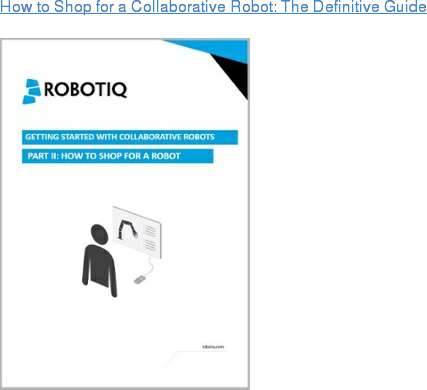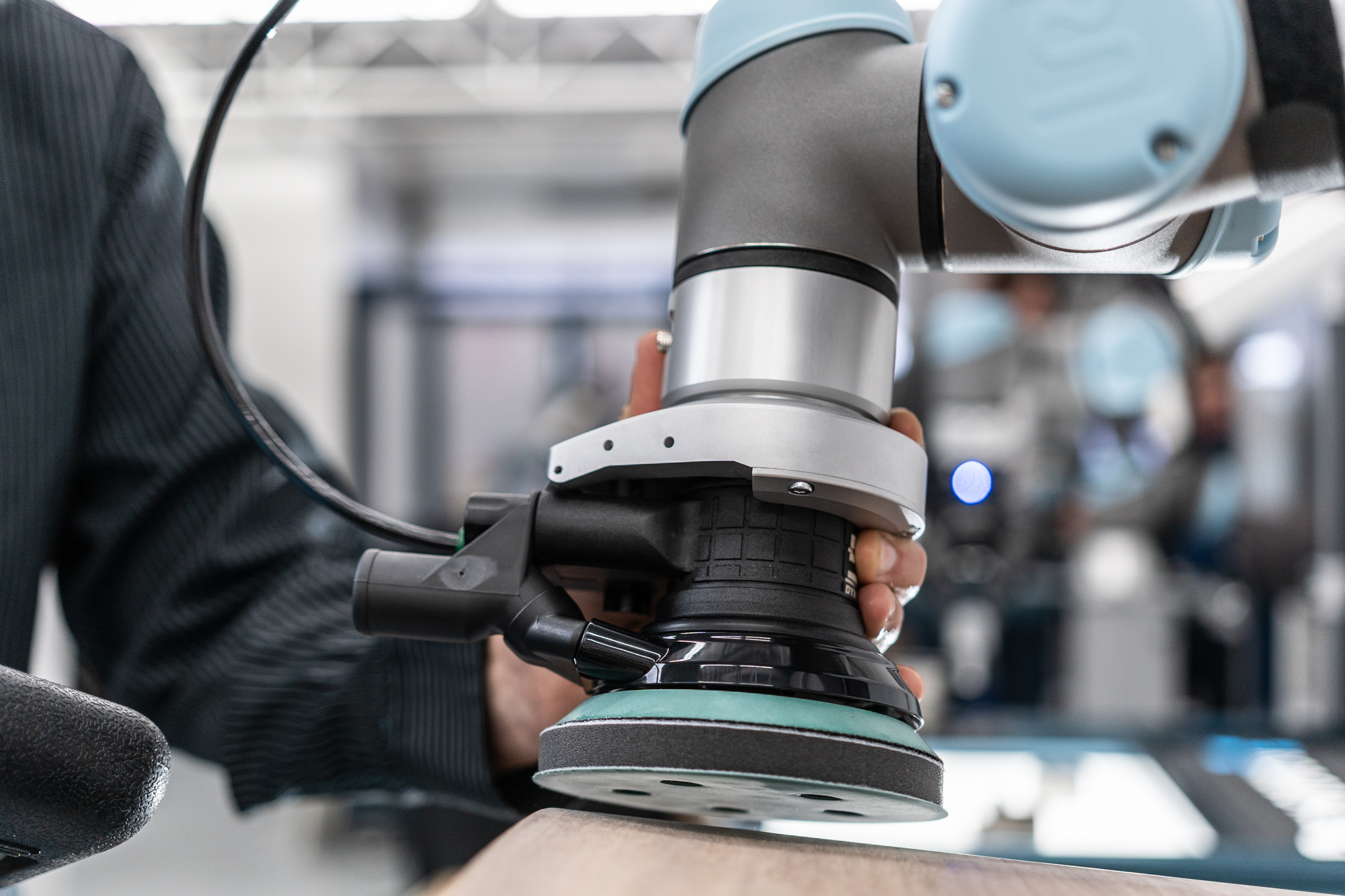The A3 Business Forum is over. What have we learned? Part 2 of 2

Posted on Feb 08, 2016 6:00 AM. 6 min read time
Enjoying a week in Florida in February isn’t bad! Better yet is getting an intense class on Business Automation. This has also been my first opportunity to meet the community face to face and it has been great! Here is the second part of our notes from the 2016, A3 Business Forum.

Delivering Collaborative and Autonomous Robotics
Melonee Wise, Fetch Robotics
Melonee Wise presented her company and robots for the logistics industry.
The logistics market is evolving with the retail market: most orders are now single items for single orders (think Amazon). The challenge is transportation: half the time of the picker is spent on transporting. Even worse: 60% of picking is still paper-based.
Enter Freight
Freight is a robot that can be fitted with bins, boxes or shelves. It follows the picker in the warehouse as the items are picked from the shelves. Once the order is complete, the picker sends the robot back to shipping and moves on to his/her next order. Automatically, another robot appears to follow the picker through that new order.
There were a number of challenges with making Freight work. First, the robot must know where the picker is. Unfortunately, workers are not comfortable wearing an RFID tag or any kind of wearable tracking technology. Fetch settled on remembering where the previous robot was and sending the new robot to that location. The second challenge was mapping the warehouse. Since warehouses are laid out in a very repetitive manner and looks pretty much the same from lane to lane, Fetch came up with mapping technology to make it quick and easy for the robot not to get lost in the warehouse. The third challenge was to make the system as easy to learn and use as possible. Fetch worked on developing software with an intuitive UI where people could use it like a smart phone.
Freight is currently in use. The warehouse workers like the robots so much they are calling them puppies.
Fetch is currently working on a companion robot: Fetch. This robot comes with one robotic arm for picking items off shelves. The end goal is autonomous warehouse picking.
Now here’s the ingenious part
Fetch has chosen to offer their robot on a subscription service basis instead of selling the robots. Fetch takes care of maintenance and upgrades, charging docks, and training. The customer pays for the right to use the robot.
According to Melonee, this simplifies robot servicing and ensures that the robots will work. “We can give you state of the art technology, continuously. This is what we sell,” said Melonee.
A Preview of the New ISO Collaborative Robot Safety Standard
Jeff Fryman, JDF Consulting Enterprises
The highly anticipated new ISO standard on collaborative robot safety standards is not a standard. Really.
TS-15066 is not a standard. It’s a technical specification. It’s meant to eventually replace clause 5.11 of the ISO 10218-2 standard.
The objective of releasing TS-15066 is to give it life in the real world and test it against real applications, so that the specifications can mature and become finalized.
In the current standard, collaborative robots are allowed, with a few restrictions:
- They can only do pre-determined tasks
- Protective measures must be active on the robot
- This can only be deployed with robots designed for collaborative operation
- Reduce the speed of the robot and use of a protective stop monitoring device when humans are in collaborative space (safety monitored stop).
- The robot’s motions are only possible using the direct input of the operator (hand guiding).
- The robot’s speed is limited to values low enough for the robot to stop before a human comes into contact with it under any circumstance. This scenario implies monitoring the presence of humans (speed and separation monitoring).
- By inherent design and control, the robot is limited to certain values of force and power (power and force limiting)
ISO/TS 15066 is mainly aimed at defining the latest power and force limiting method. In this context, risk assessment is paramount. "Each robot system is unique and must be assessed for risk and mitigation," said Fryman.
Power and force-limiting robots have special considerations:
- They should be working on non-hazardous processes only
- No sharp edges
- Safe gripper design
- Predicting the direction of robot movement in conjunction with the worker location and movement.
The risk assessment should encompass several elements:
- Task-based risk assessment: layout and identification of the task, system limitations, hazard identification and elimination, and risk reduction.
- Workspace requirements: a clearly defined collaborative workspace, safeguards (that can be software-based), and a 500 mm minimum space from trapping or pinch points.
- Robot operation: the robot must have a safety mode when the worker is in the collaborative space. This is where the hard math happens: there should be a dynamic definition of how much space should be kept between robot and worker.
Power and force limiting by design or control
This is the new territory. As much as we know on what amount of force or pressure is required to break a bone or cause an injury, the objective of the technical specifications is to find the threshold for no injury.
The question is: how much force is damaging? How much pressure will injure the worker? The ISO committee mandated a study to determine the onset of pain, that is, how much pressure becomes painful. The study was conducted with 100 subjects, on 29 locations on the human body.
Pressure specifications vary depending on the body part, with the temple at the lowest with 65 newtons and the 7th neck muscle at the highest with 210 newtons.
What’s next for collaborative robot safety?
Now it’s the viability test for the technical specifications. How can we meet them? How can we make sure we meet them? This will help the ISO committee finalize the specifications so they can be incorporated into the ISO 10218-2, Robots and robotic devices standard.
The next focus for the committee with be end effectors - how can we make end effectors collaborative and safe for workers?
To learn more about robot safety read our eBook on collaborative robot risk assessment.
Myths and Reality of the Internet of Things
Douglas Bellin, Global Senior Manager, Manufacturing and Energy at Cisco Systems
Douglas explained how the industrial internet of things is a combination of Information Technology and Operation Technology. He made the case for the IoT in factories and gave some examples of Cisco’s projects with Mazak, FANUC and Rockwell just to name a few. By gathering data and connecting machines, factories have:
- Better asset utilization - Using live data to be able to respond faster, even proactively to prevent down time.
- Increasing employee productivity - With data along the production line.
- More visibility of the supply chain - Within its own factory and eventually upstream with their suppliers and downstream to their customers.
- Improving customer experience - By connecting flexible, programmable production machines with IT, it is possible to customize products for individual customers.
- Stimulating Innovation - Both for machine vendors who have a deeper insight on their real machine utilization, and for the manufacturer who is using it.
One transformational impact that the industrial IoT is having is to open the Machine as a Service (MaaS) business model for machine vendors. In this model, just like some printer companies do today, the user does not buy the equipment upfront, but pays as he uses the machine. Douglas presented one example of this initiative that they have with Mazak, a large machine tool supplier.
So that's it for our highlights, we found it informative as usual and there was much more going on than we could cover. We hope you enjoyed our short recap of the 2016, A3 Business Forum. If you missed part one, here's the link.










Leave a comment